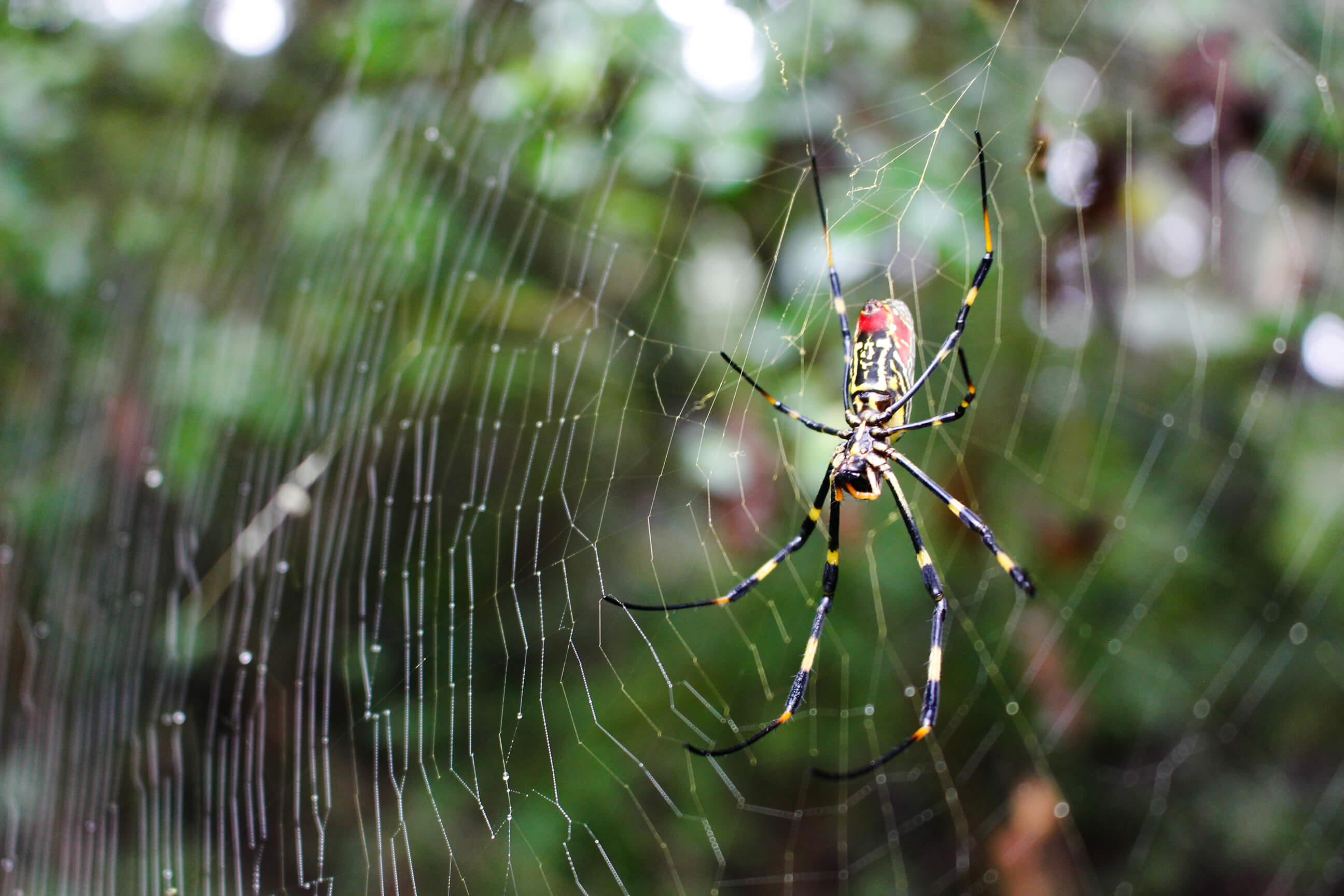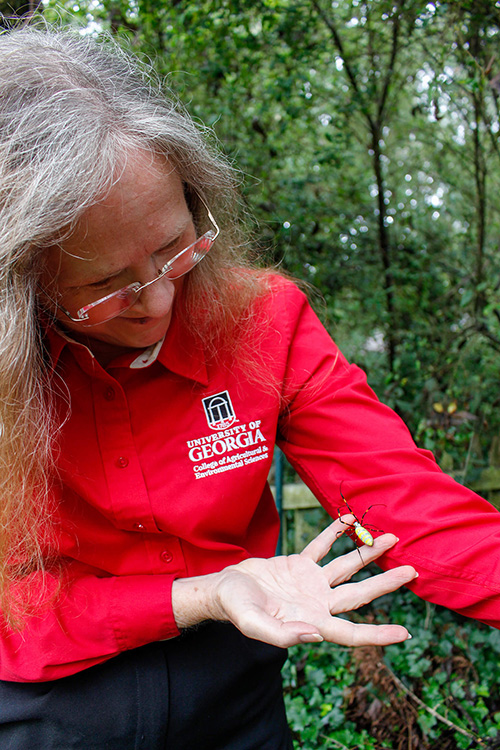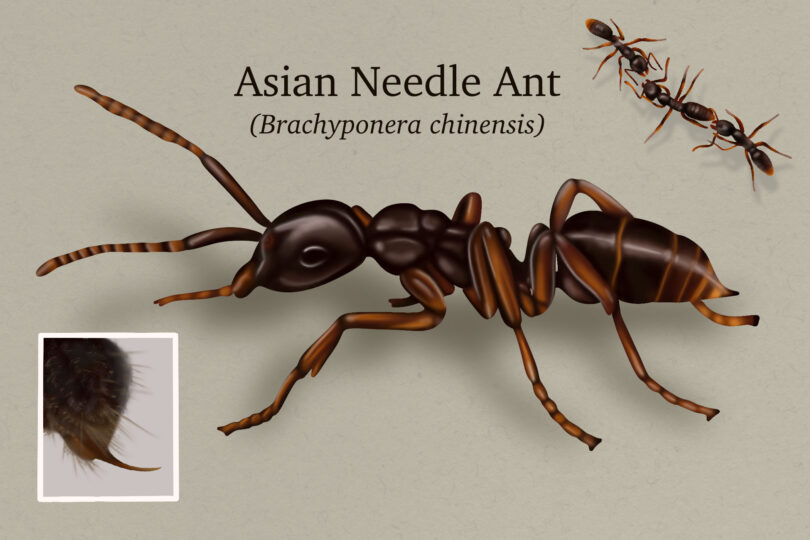
Millions of palm-sized Joro spiders have suspended themselves in three-dimensional golden webs on porches, power lines and mailboxes in roughly 25 counties in the state — and counting.
It seems Georgia residents will need to get comfortable with this new arachnid in town because, according to scientists, it’s not going anywhere.
Three years ago, University of Georgia entomologist Will Hudson was excited when two big, beautiful Joro spiders appeared on his property in Winterville, Georgia. He enjoys watching spiders, and this new species was exceptional with its unusual golden web.
“Last year, there were dozens of spiders, and they began to be something of a nuisance when I was doing yard work,” he explained. “This year, I have several hundred, and they actually make the place look spooky with all the messy webs — like a scene out of 'Arachnophobia,'” he said, extending an invitation to come to his home to view the creepy scene.
Joros were first identified in the state in 2014 by Rick Hoebeke, Georgia Museum of Natural History collections manager, when a call came in about an unusual spider found by a citizen. Hoebeke then led an effort to identify the East Asia native spider and track the Joro as it spread throughout Georgia.
“Our best guess is that it came in a shipping container and dropped off here somewhere on I-85 in the Braselton area,” Hoebeke said of his tracking research. “They are great little hitchhikers!”
As far as invasive species go, Hoebeke believes this one is “not so bad.” In fact, he has tried to convince the hundreds of people who have sent emails this year concerned about how many spiders are in their yards that paying exterminators will not give them the desired result or solve the problem.
UGA scientists have not noticed any negative effects on any native species, which was one concern. The only negative effect concerning the spiders seems to be the nuisance caused by their extreme numbers this year. All experts agree that, over time, Mother Nature will take its course and the numbers will settle down to a more moderate amount.
“I think people need to make peace with Joros and accept the spiders because they are not going anywhere. Halloween is coming up, so we all have fine, natural decorations for the kiddos to enjoy,” Hoebeke said.
Natural pest control

UGA entomologist Nancy Hinkle sees the Joro as a “beautiful creature that provides free pest control.”
“Joro spiders present us with excellent opportunities to suppress pests naturally, without chemicals, so I’m trying to convince people that having zillions of large spiders and their webs around is a good thing!” she said.
Hinkle said they help suppress mosquitoes and biting flies, and Joros are one of the few spiders that will catch and eat brown marmorated stink bugs, which are serious pests to many crops. Scientists are hopeful that the Joro spiders will help make a dent in these populations.
Handling a Joro and allowing it free reign on her arm, Hinkle, who was invited to Hudson’s property for the Joro tour, assured onlookers that the leggy arachnid was not interested in biting her at all.
“As with all orb weavers, it has small mouth parts ... Right now she is just using me as substrate,” Hinkle said as she watched the large spider drop off her arm.
Joros to come
For those truly concerned, most will have died off come late November, Hinkle assured, but they will leave behind egg sacs full of eggs. When the hatchlings emerge in the spring, they will hitchhike again, but this time they will be riding the wind on a strand of silk, perhaps extending their habitat.
Joros are harmless to humans and generally large enough to avoid, unless, like Hudson, hundreds are enjoying life around your home.
Walking up the steps to Hudson’s front porch, visitors are greeted not by the seasoned entomologist but by a gigantic, beautiful spider gracefully posing in her golden web.
Looking to the left and to the right, you can see that she has lots of company.
Hudson walks out his front door to greet those hesitantly standing on the steps gazing at the collection of spiders adorning the front of his home.
“I know. They are gorgeous spiders,” he said, chuckling. “But there are just too damn many of them.”
Selective elimination
Giving the tour around his property, Hudson described the different methods he had used to eliminate only the necessary offenders.
“Now that they are larger, you can take a leaf rake or a stick and wrap the spider in her web in a ball. Lay the web on the ground and step on the spider. Repeat as necessary. Spraying individual spiders with an aerosol product is also an option,” he explained.
He also strictly focuses on eliminating the large, colorful females and ignores the smaller, brown males — “since the males are a waste of time.”
Hudson stressed that the best anyone can do is reduce numbers in areas where people walk or spend time. Given the numbers of calls he receives, he wants to be clear to the public that eradication is not an option.
“Let me reiterate, I have eliminated more than 300 females this year,” he said, glancing toward a path leading to another part of his yard.
“Have you seen 'Lord of the Rings'?” he asked with a smile, as he invited his guests to enter the pathway.
.jpg)
For information about the Department of Entomology in the UGA College of Agricultural and Environmental Sciences, visit ent.uga.edu.
To learn more about the UGA Collection of Arthropods, visit site.caes.uga.edu/ugca.






